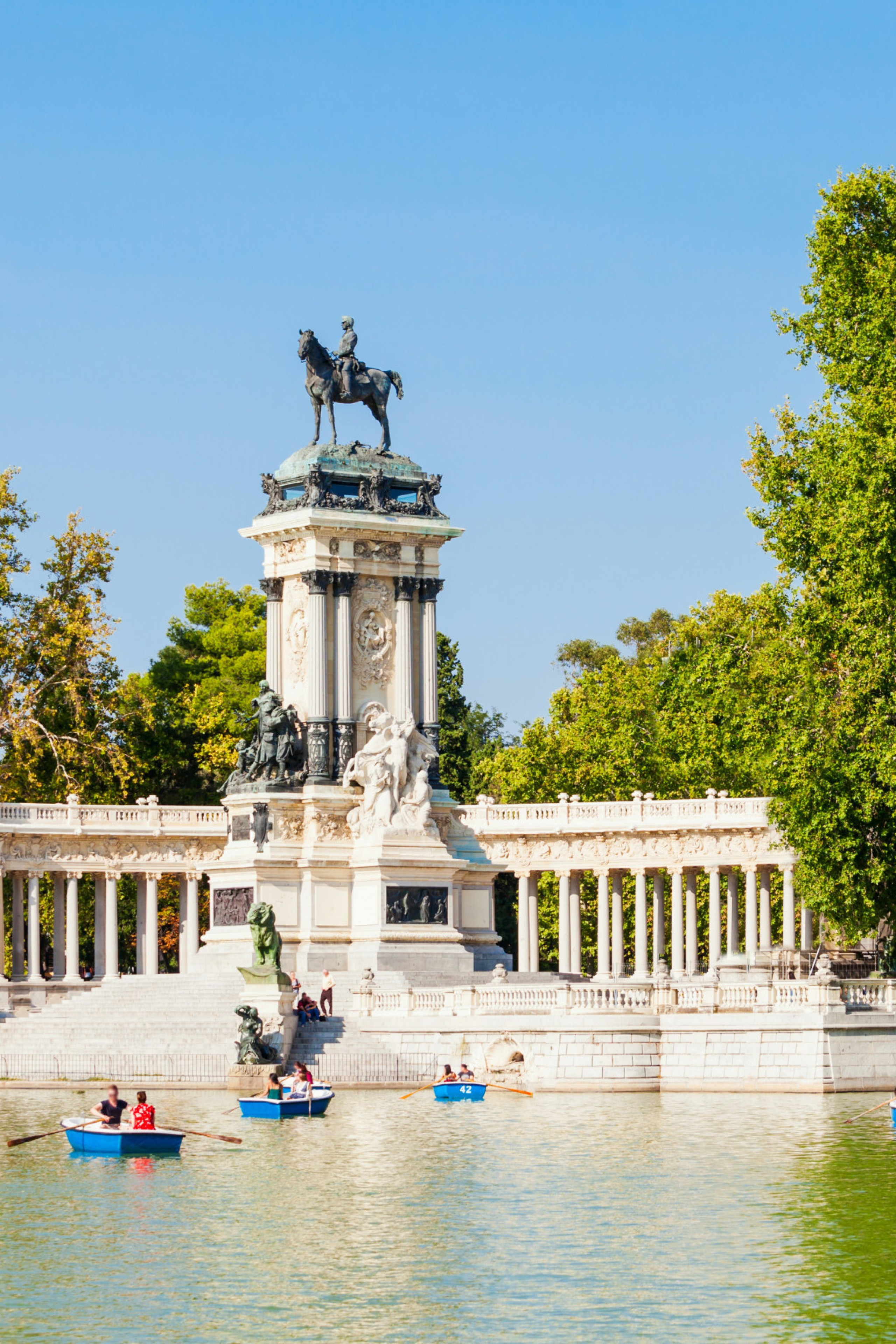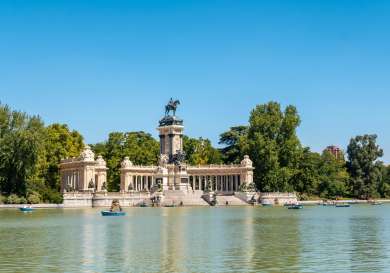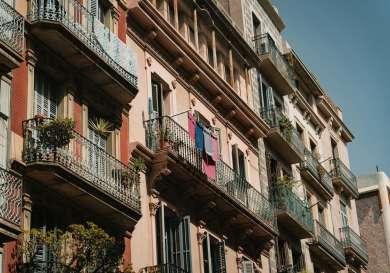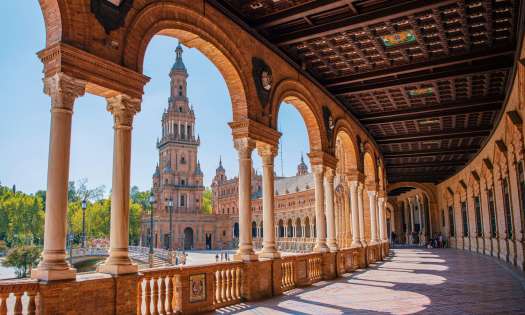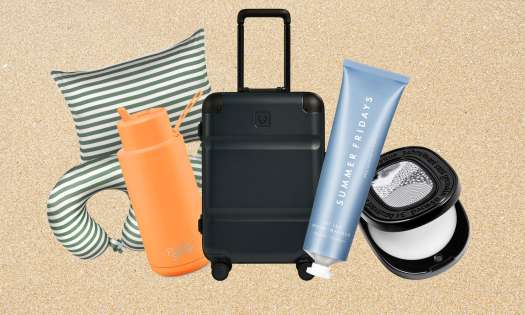By
The Sybarite Team
on
19th September 2025
Madrid is a haven for culture vultures and foodies alike. Discover insider Kellie Erm’s guide to the best things to see, do and eat in the soulful Spanish city.
From world-class museums to whimsical neighbourhoods and traditional tapas, Madrid has plenty to offer. Here's The Sybarite's day-by-day guide if you've only got 72 hours to explore the Spanish capital.
Day One:
Breakfast: El Riojano
Don’t be alarmed by El Riojano’s proximity to tourist haven, Puerta del Sol. This pastry shop has been around since 1855 and is a Madrid staple. You’ll still see the tables filled with elegant Spanish couples who have been going there for decades, enjoying their favourite breakfast. The décor, including the original marble flooring and brass fixtures, hasn’t changed since they first opened their doors 170 years ago, and is a welcome change from the ever-evolving café culture.
Do: The Neomudéjar Museum
If you are looking to skip the never-ending queues for El Prado and Reina Sofia, I would suggest heading to the Neomudéjar Museum, a centre for avant-garde art just south of the Retiro Park. This underground gallery is housed in an old railway interpretation station, showcasing video art, installations, as well as workshops. Once you’ve got your fill of culture, head to their courtyard at the entrance for a drink surrounded by lush greenery and mismatched garden furniture.
Lunch: Hermanos Vinagre
A bit of a cult-favourite here in Madrid (they’ve even recently had a collaboration with Uniqlo), Hermanos Vinagre’s outposts are popular for a reason. Stop here for an ice-cold beer or a glass of vermouth, accompanied by some gildas (skewers with olives, anchovies, and pickled peppers) and their playful Ensaladilla Rusa (Russian salad), presented in a Russian Matryoshka doll. While the menu differs slightly from their four other sites, you’re guaranteed to leave with a smile on your face after the ultimate pickle fix.
Do: Explore the Salamanca neighbourhood
Head to the Salamanca neighbourhood just north of the Retiro Park to discover an array of independent Spanish designers. On the hunt for some local delicacies? Make a pit stop at Mercado de La Paz to secure the very best Jamon Serrano and tinned anchovies.
Dinner: Puerto Lagasca
Located on one of my favourite streets in Madrid, Puerto Lagasca offers a plethora of standout dishes that will impress even your most discerning Spanish friends. The go-to is the grilled Canarian Majorero cheese with honey, as well as the traditional Iberian pork cheek. Whatever you do, don’t forget to reserve a (huge) slice of their Mille Feuille, because once it's gone, it's gone.
Day Two:
Breakfast: Chocolateria 1902
Take a deep-dive into Spanish breakfast culture (and avoid the San Gines tourist-trap), by visiting the bustling family-owned Chocolateria that’s been around since 1902. Their hot chocolate recipe has been passed down five generations and is the perfect start to your day, alongside a plate of their freshly fried churros.
Do: Visit Matadero
Located in Madrid’s former meatpacking district, Matadero is it’s now the city’s centre for contemporary creation, housing temporary exhibitions, cinemas, and a dance centre. It’s well worth a visit just for the architecture, followed by a stroll along the Manzanares river.
Lunch: La Maruca
Some people (myself included) would argue that La Maruca serves up one of the best tortillas in Madrid. Avoid the queues for Casa Dani (made famous on Netflix series, Somebody Feed Phil), and head to one of La Maruca’s three restaurants. The menu is a contemporary take on primarily Cantabrian dishes, with the Castellana and Lopez de Hoyo sites boasting spacious terraces.
Aperitivo: Crudo
The perfect spot for natural wines and impressive cheese platters. Founder and ‘fromagelier’, Annet Guevara, will guide you through her impressive cheese list, which changes daily. While you’re at it, ask her to pair your chosen cheeses with her favourite wines. The interiors have a soft yellow tone throughout, no doubt inspired by some of the cheeses featured on the menu. Crudo also serves the gooiest cheese toasties, so I’d suggest buying a bottle of wine, and heading down to the Retiro park for an elevated picnic.
Dinner: La Fisna Wine Bar
This small rustic wine bar and bottle shop boasts one of Madrid’s most impressive wine lists. While the sheer volume of wine available might feel overwhelming, their very knowledgeable staff are happy to help. The best part? If one of the wines tickles your fancy, you can buy a bottle to take home.
Day Three:
Breakfast: ORA Contemporary
Wake up early and check out the Carabanchel district, the centre of a large creative and bohemian movement, boasting over 130 artist studios and workshops. Visit Ora Contemporary to start your day and enjoy some of their high-grade coffee, matcha and home-made treats. Ora Contemporary also features a rotation of artist residencies, art talks, and even yoga sessions. Make sure to catch up with owner Ana Barrenechea to discuss any current residencies.
Do: Faro de Moncloa
Head here for the best panoramic views of the city, a A former transmission tower turned observation deck, Madrid’s Faro de Moncloa offers some of the best panoramic views of the city. at 92m high. Tickets can be purchasedbought on-site.
Lunch: La Esperanza
Located in the heart of the Literary Quarter, La Esperanza is a gem of a tapas bar filled with quirky and retro furniture inspired by the 70s. The clientele spans generations, with young and old bonding together over a glass of vermouth. The menu offers half portions, a welcome sight when you see the size of the menu. Don't forget to order a Bomba de Barceloneta (or two). You can thank me later!
Do: Explore the Literary Quarter
Enjoy a stroll around Madrid's Literary Quarter (Barrio de las Letras), which was once home to the great writers of the Golden Age of Spanish literature, including Cervantes and Quevedo.
Dinner: Cerveceria Los Gatos
The owner, who hails from La Palma, has spearheaded this now-iconic little tavern since 1987, supplying madrileños and travellers alike with cold beer and anchovies. Come for the famous tostadas (on display by the bar), and stay for the history and the curious bric-à-brac dotted along the walls. See if you can guess which table the Rolling Stones usually sit at!
Where to stay:
Whether you’re looking for a hotel or an Airbnb, the areas around the Retiro Park are always sound options, with close proximity to many of Madrid’s key spots. My go-to spots are Salamanca, Goya, Ibiza, and Justicia.
Transport:
Madrid is an extremely walkable city, boasting beautiful streets and independent shops that are well worth exploring on foot. Other popular modes of transport include the metro, Uber and local taxi providers.
